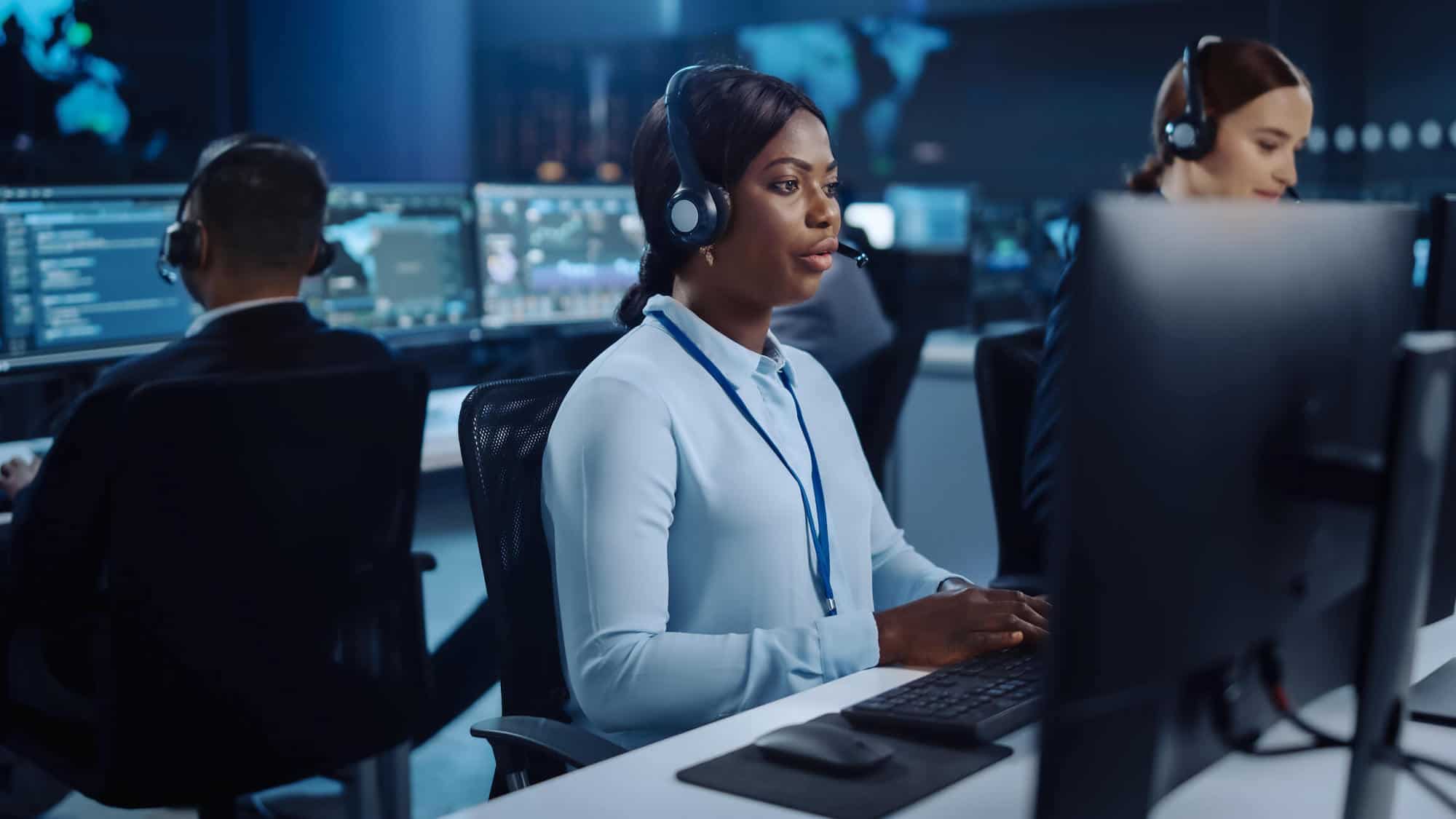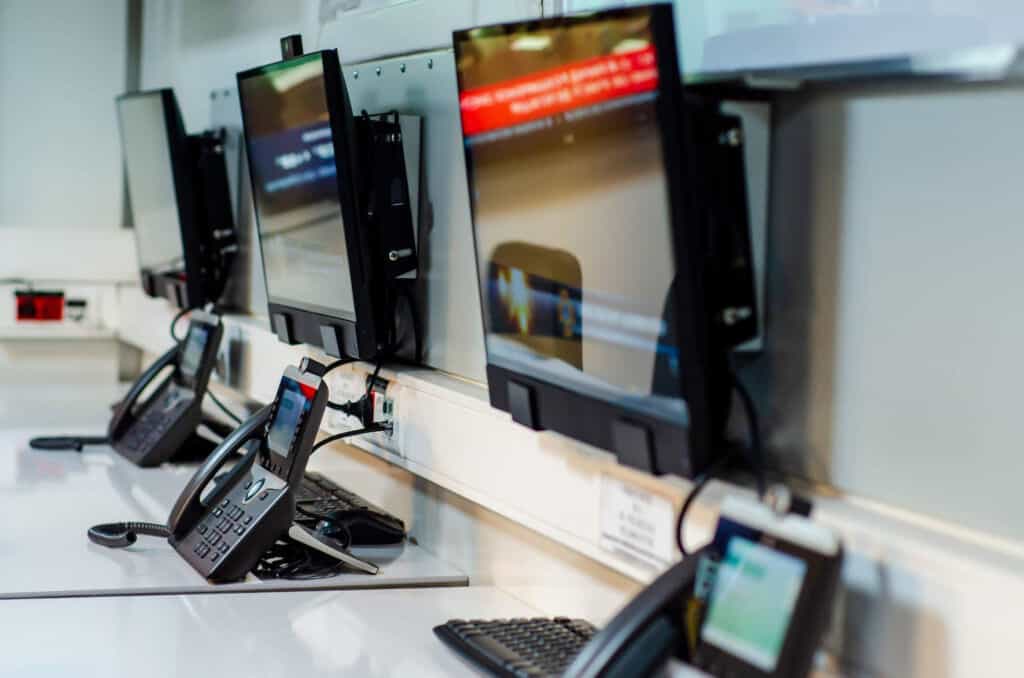Disaster strikes and effective communication becomes paramount. Municipalities and states require a centralized hub for efficient emergency management operations, and a well-designed Emergency Operations Center (EOC) fulfills this crucial role. EOCs are pivotal in coordinating responses to imminent threats and hazards while providing a safe and centralized location for collaboration and communications.
Let’s look at the intricacies of EOC design, function and critical elements, and how you can be ready to serve your community during an emergency.
Understanding the Role of Emergency Operations Centers
EOCs are the nerve center for centralized monitoring, control and command during emergencies. According to the Federal Emergency Management Agency (FEMA), an EOC is an off-site location where staff from multiple agencies converge to address imminent threats and provide coordinated support to incident command and on-scene personnel.
Unlike federal command-and-control centers, EOCs are tailored to local and state government entities. They focus on disaster or casualty response, emphasizing disaster response coordination rather than military coordination and deployment.
Who Benefits from EOCs?
Law enforcement agencies, emergency responders and organizations requiring a centralized hub for crisis management find EOCs indispensable. EOCs offer a critical space for strategizing and executing plans throughout an emergency’s various phases, from response to recovery.
The Importance of Proper EOC Design
An efficiently designed EOC ensures a secure, accessible, well-equipped and safe space for centralized command during emergencies. For example, during weather events — which often trigger emergency operations — having a place with reliable power, amenities and structural integrity can significantly enhance public safety and communication.
Each element of an EOC — from location considerations to communications equipment to essential facilities — should be configured to optimize performance. This enables effective coordination, communication and response. A well-designed EOC is vital in protecting communities and organizations by serving as a strategic hub for crisis management across various emergency phases.
5 Key Design Considerations for EOCs
1. Survivability: Ensuring Operational Continuity
- Locate the facility away from high-hazard areas.
- Implement seismic retrofitting and mitigation measures.
- Protect against potential disasters — depending on your area, you’ll need to consider seismic, water, wind and other risks.
2. Redundancy: Backing up Systems for Reliability
- Install redundant systems such as generators, heating, cooling and water supplies.
- Plan for fuel and supplies to sustain operations for 7–10 days.
- Prepare for all emergencies, both expected and unexpected — EOCs need to be ready to flip a switch at any given moment.
3. Communications: Maintaining Situational Awareness
- Implement redundancy in communication systems, including landline phones, cellular communications, satellite phones, internet access and various radio systems.
- Incorporate visual communication tools such as large video walls or monitor banks for real-time updates.
4. Flexibility & Open Architecture: Adapting to Changing Needs
- Design scalable operations to accommodate future growth and emerging technology.
- Incorporate raised flooring and flexible wall systems to enhance the adaptability of the space.
5. Security: Mitigating Emerging Threats
- Adapt to take both physical and cyber security measures into account.
- Consider physical and cyber security precautions such as layered security, access control, surveillance systems and blast film for windows.
Regulations & Compliance for Emergency Operations Centers
EOCs must adhere to specific regulations and compliance standards to ensure effective emergency management. Compliance involves meeting guidelines set by authorities such as FEMA, the Occupational Safety and Health Administration (OSHA) and local emergency management agencies. These regulations encompass facility safety, staffing requirements, communication protocols and data security.
EOCs must also regularly undergo drills and training exercises to maintain preparedness aligning with regulatory expectations. Adhering to these standards is essential for the seamless coordination of multi-agency responses during crises, emphasizing the importance of regulatory compliance in optimizing EOC functionality.
Examples of Effective EOC Design
Good EOC design incorporates elements such as unified command models, technology-driven layouts and secure information management practices. This is essential for optimal emergency response coordination. Examples of such designs include:
- Unified command models — Integrate multiple agencies for seamless coordination
- Technology-driven layouts — Incorporate advanced communication systems and information displays
- Modular and scalable spaces — Allow for flexibility for emergency scenarios and future expansions
- Strategic locations — Ensure accessibility, security and survivability away from potential hazards
- Collaborative workspaces — Facilitate effective communication and cooperation among emergency response teams
- Secure information management — Implement robust data security measures for confidential and sensitive information
Starting the Process: 8 Steps to Establish an EOC
Setting up an EOC is an involved undertaking with several details to account for. Start the process by taking the following steps:
- Assessment — Conduct a comprehensive assessment of potential threats, operational needs and spatial requirements.
- Needs analysis — Identify the specific requirements of your organization and the community it serves during emergencies.
- Team formation — Establish a dedicated team that’s responsible for EOC planning, design and implementation.
- Space planning — Develop a flexible plan that accommodates various EOC functions for different scenarios.
- Technology integration — Integrate advanced communication systems, ensuring redundancy for seamless operations.
- Equipment procurement — Consider redundancy and long-term functionality as you define your needs, evaluate vendor reliability and select equipment for your EOC.
- Flexibility and scalability — Design with scalability to accommodate future technological advancements and staff expansions.
- Collaboration — Encourage cooperation between the various agencies and stakeholders involved in emergency response.
Procuring Equipment for EOC Operations
Begin by defining needs and evaluating reliable vendors, followed by strategic installation that considers compliance with regulatory standards and includes high-quality products.
- Identify Needs — Clearly define the equipment requirements based on the EOC’s functions and anticipated scenarios.
- Vendor Evaluation — Assess vendors for reliability, product quality and compliance with regulatory standards.
- Strategic Installation — Execute a strategic installation plan, considering redundancy, flexibility and long-term functionality.
Find the Right AV Solutions for Your EOC with DGI
A well-designed emergency operations center is the cornerstone of effective crisis management. By prioritizing considerations such as survivability, redundancy, communications, flexibility and security, EOCs can autonomously operate during emergencies and save lives in the process.
For comprehensive insights and the latest AV solutions tailored to your EOC, reach out to DGI Communications. Take proactive steps toward enhancing your emergency preparedness and fortifying your EOC for future challenges.

